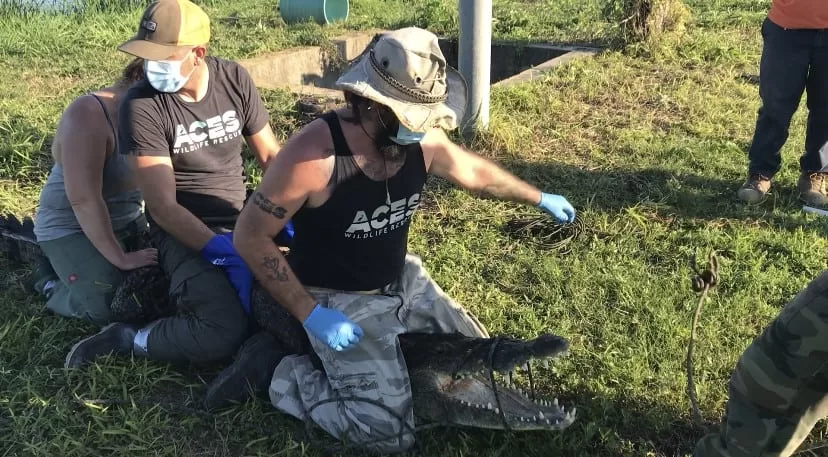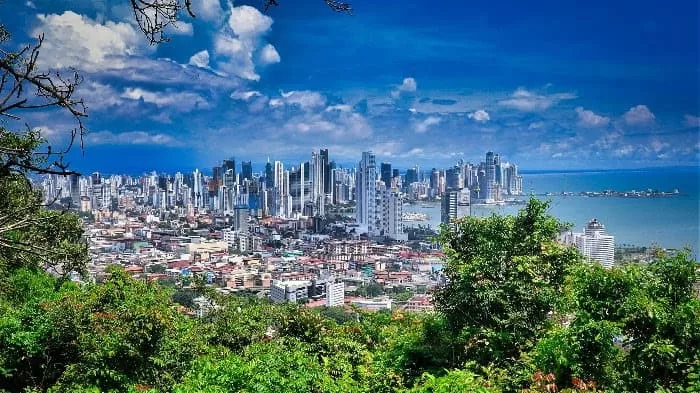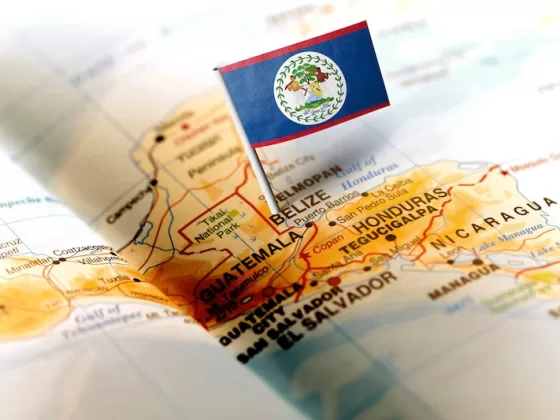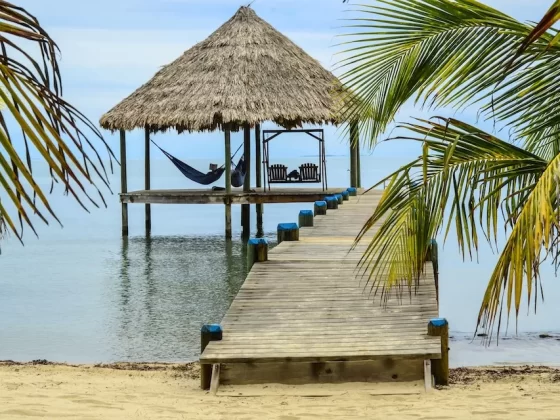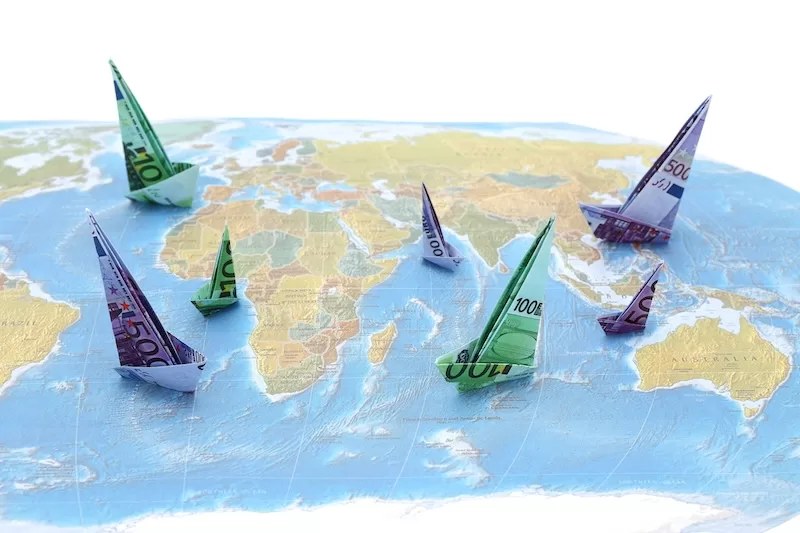Arriving barefoot and decked out in a tarp hat for our interview, Chris Summers is all you would expect a crocodile expert to be. Chris’ English accent, enthusiasm, love for nature and animals is written all over him like a tattoo. Lighting his chocolate pipe, Chris sat down poolside at the Grand Baymen with Betsy Rosenlund from ECI Development, and myself to chat about ACES Wildlife Rescue on Ambergris Caye in Belize.
Charlotte Tweed: Chris, how did your crocodile sanctuary come to be in Belize?
Chris Summers: Well, it’s not so much a crocodile sanctuary anymore. That’s kind of all done. The people who started the crocodile sanctuary have gone back to the States. When me and Christina took over, we leaned towards general wildlife rescue out of necessity because there was nothing else like that here on the island. There are other wildlife organizations in the country, but they’re all on the mainland. Anytime we got a call about an animal that wasn’t a crocodile, we would then have to figure out how to ship the animal to another rehab center on the mainland, which is a lot of stress for an animal already sick or injured. We were finding a lot of times it wasn’t enough of a medical emergency to put the animal through the stress of transporting the mainland.
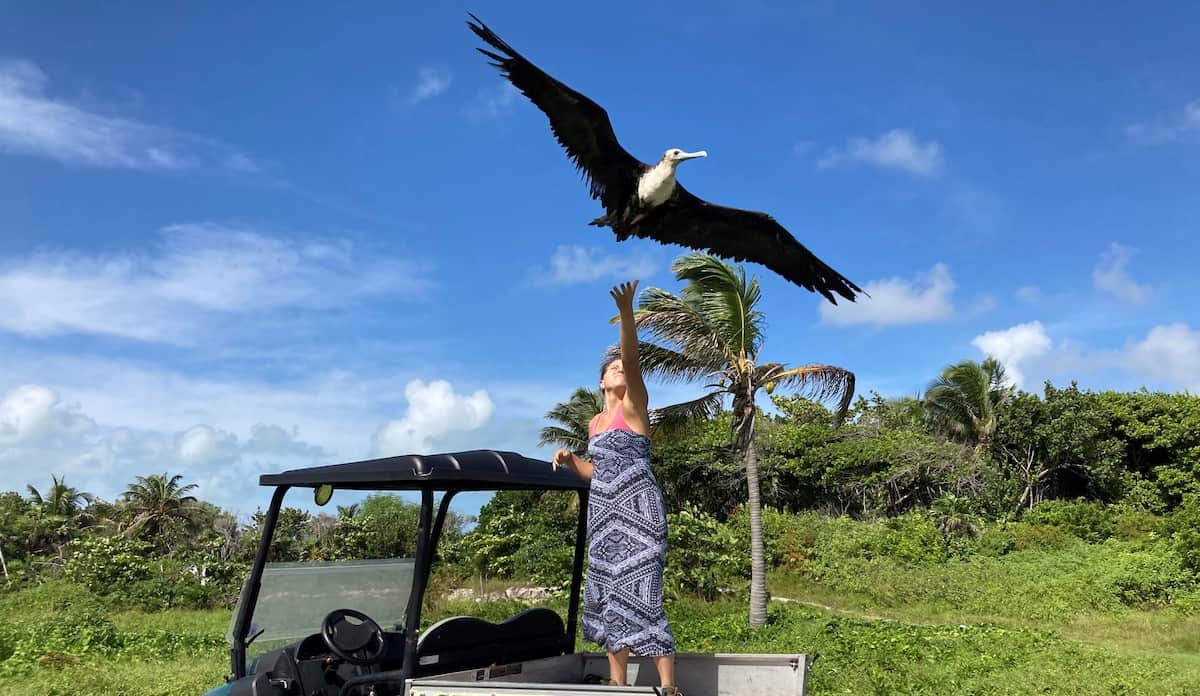
Christina has done rehab courses and trauma courses at other organizations in Belize to learn more about other wildlife. She’s completed research by training with them to learn more about rehabilitation procedures so we can take these animals in when it’s something we can handle. This way, we can avoid putting them through the stress of going to the mainland because then they have to go on the water taxi. They don’t take them on the plane. It’s a 90-minute water taxi. Then depending on where the animal is going, it’s at least another hour or two in the car. We just started doing it ourselves.
When lockdown happened last year, that solidified our direction. Luckily, Christina had just been in the States doing a trauma and food care course in Texas for wildlife rehabilitation. Then lockdown came, and there were no planes. There were no water taxis. We couldn’t physically ship the animals out of here. We had no choice. Even though it was something we were planning, it got thrust upon us. We thought, “Great, we can figure it out.” So, we did.
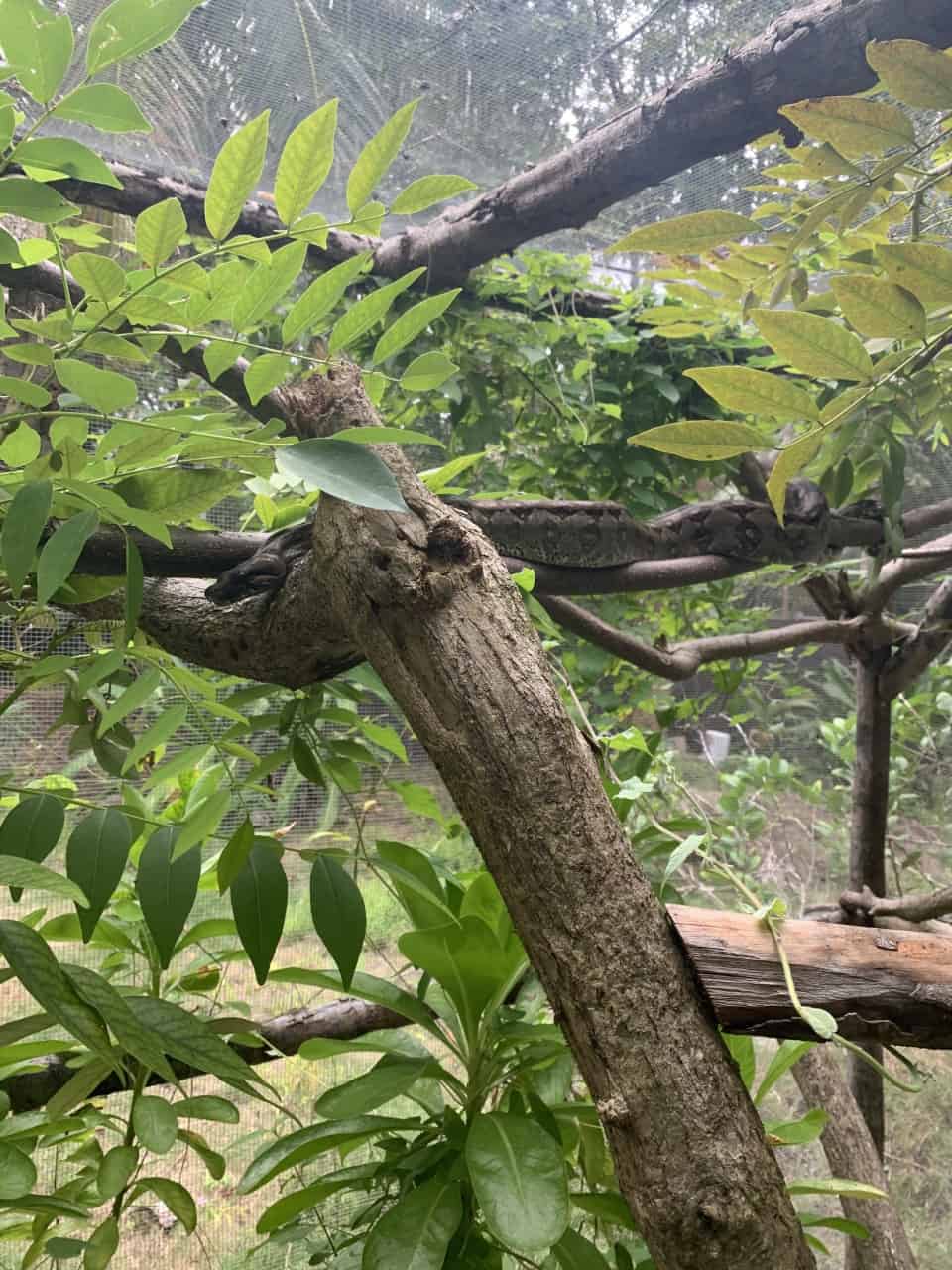
Charlotte Tweed: Fantastic. What is your mission in San Pedro?
Chris Summers: That’s very deep and broad. General conservation of the environment to take in and rehabilitate any sick and injured animals we come across or people come across and then preservation of the environment for those animals. Preservation of the environment ties in with our work in the mangroves.
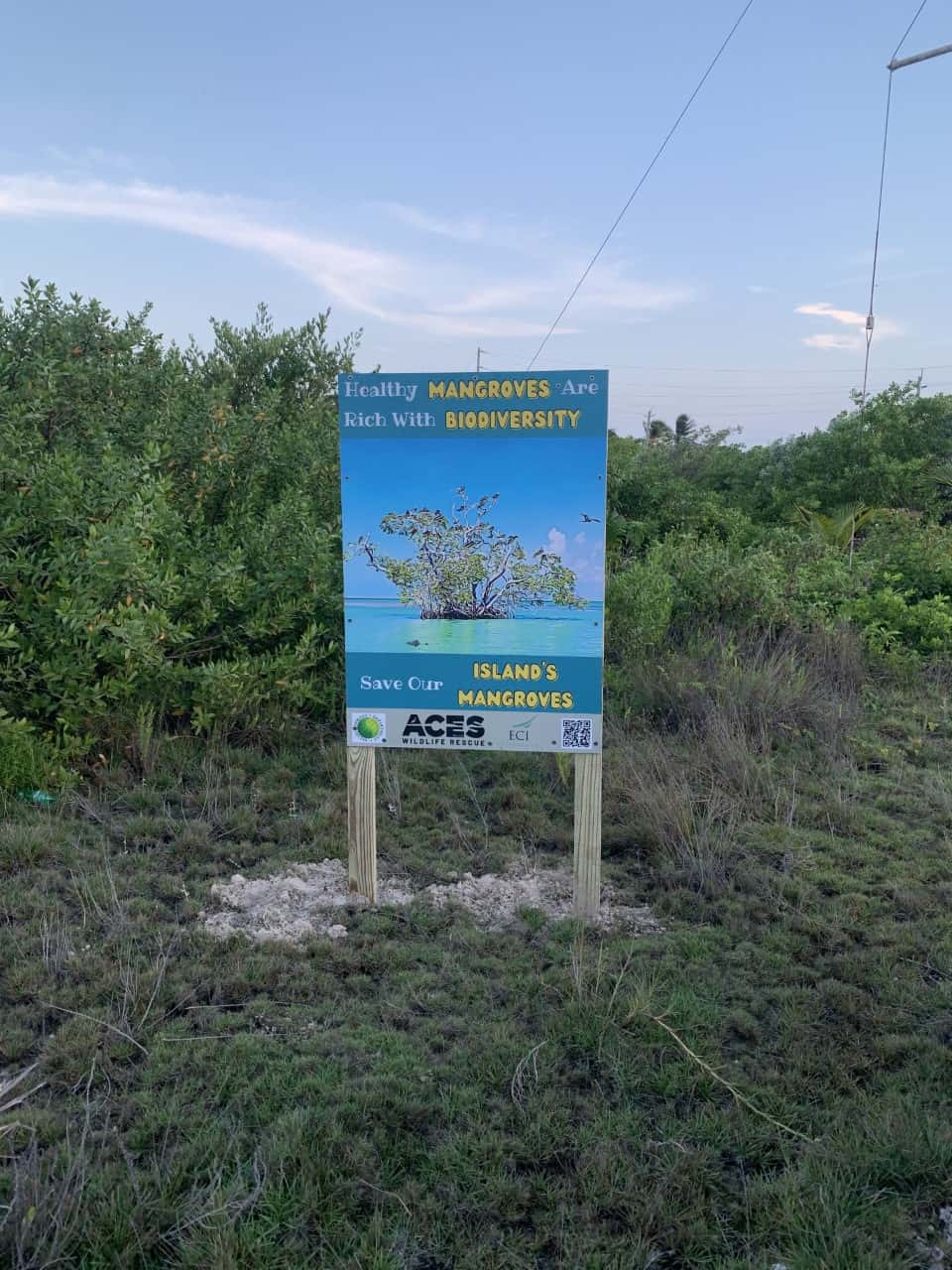
Charlotte Tweed: You run tours as well?
Chris Summers: No, not anymore.
Charlotte Tweed: Because of COVID, or you don’t do it at all anymore?
Chris Summers: COVID was the final nail in the coffin. We were planning on making 2019 our final year for tours anyway. The tours came about as a double kind of idea. It was helping us with our research and provided funding for us to go out nightly and categorize and tag the animals. And then it was also bringing a source of income for us. We got to a point where it didn’t make sense for us to go out nightly catching crocs anymore with the low enough population of crocodiles and the amount we’ve tagged already. You end up catching the same ones repeatedly. You’re not learning anything. They’re already tagged, or measured, blood samples had been taken, whatever you needed. So yeah, 2019 was going to be the final tour season anyway. Unfortunately, it wasn’t much of a season.
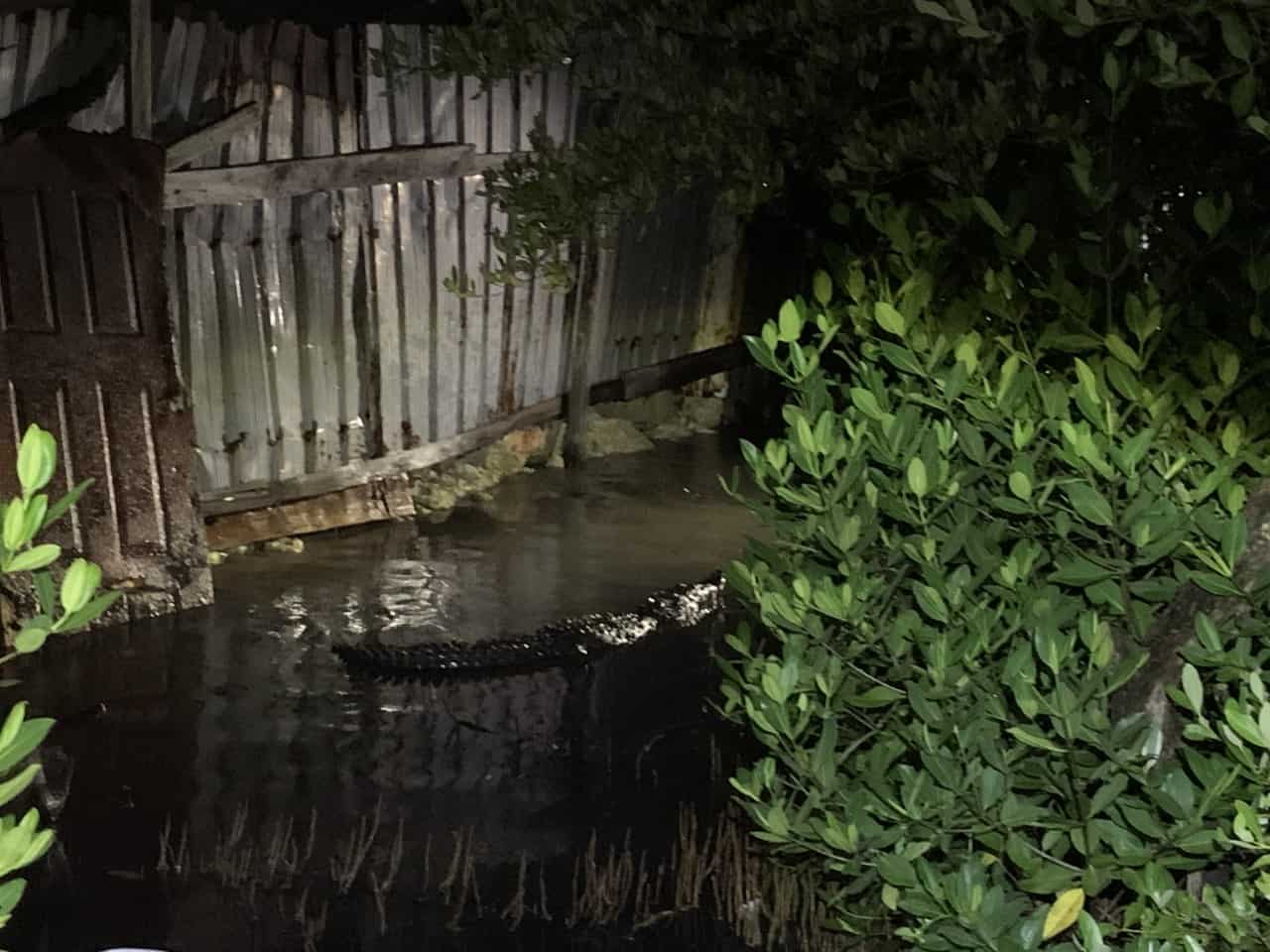
Charlotte Tweed: Are you focusing on expanding your wildlife rescue and rehabilitation center?
Chris Summers: Yeah, we’re in the process of building right now. We’re building enclosures for unreleasables because we have several unreleasable animals. We’re trying to build permanent habitats for them. Then we can have people come to us and have educational visits around the place. We ordered the lumber yesterday. We’re about to build a seabird aviary rehab for pelicans, herons, that type of thing.
Charlotte Tweed: Can people come and see the animals now or not?
Chris Summers: Yeah, but we’re not quite open yet. We have had people come to us. They want to donate. They come, and we’ll spend a little time educating about the animals. The important thing we try and put across to people is that we are not a zoo. It is a wildlife rehab center, and these are the unreleasables, and this is just something we do for funding. We try to lower people’s expectations before they come, so they know what to expect.
Charlotte Tweed: You take donations for visits?
Chris Summers: Yes.
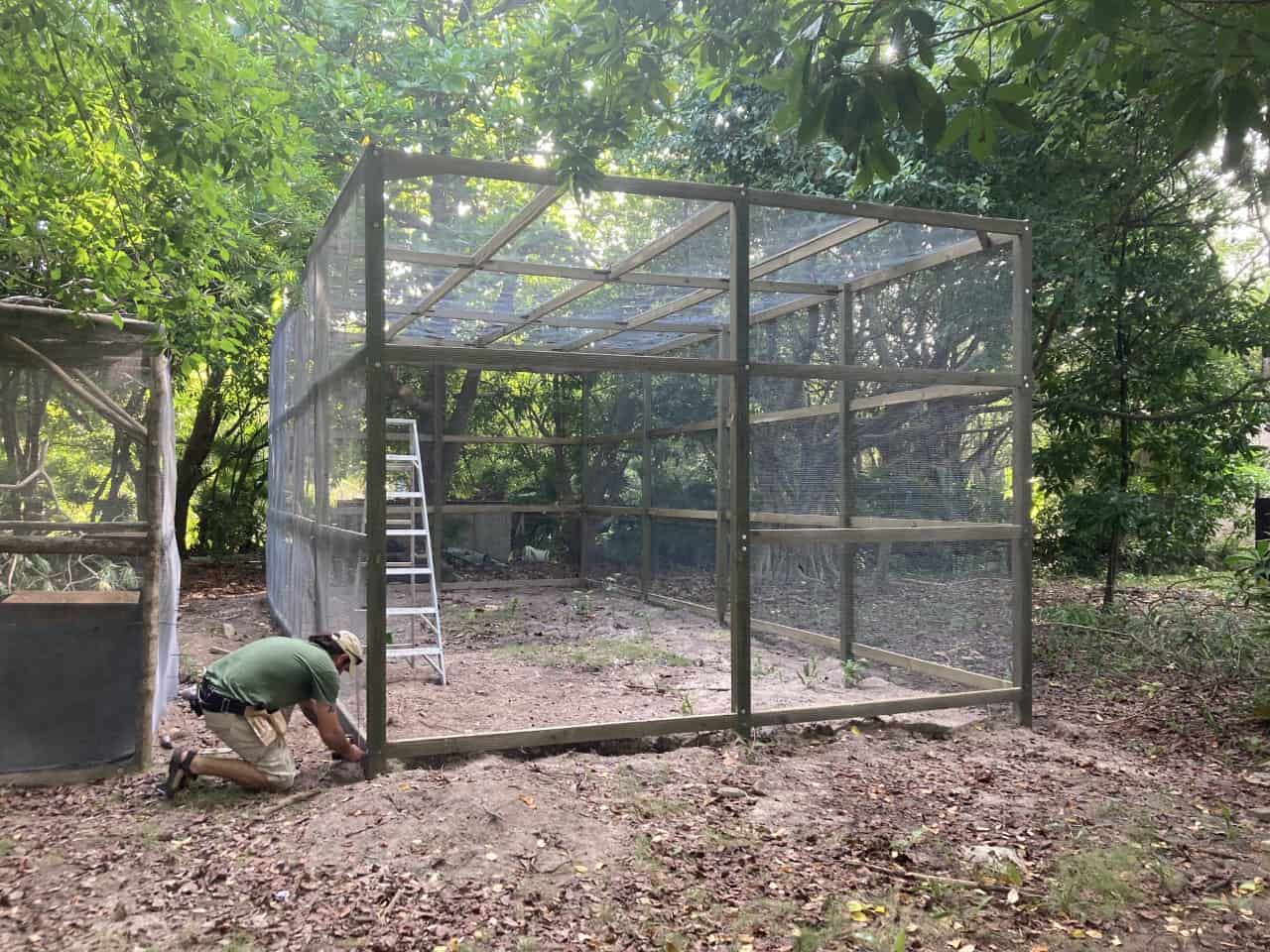
Charlotte Tweed: You provide 24/7 emergency response to injury, ill or orphaned wildlife. What’s the most critical situation you’ve been called to?
Chris Summers: Define critical.
Charlotte Tweed: Where the animal has been the most stressed?
Chris Summers: Oh man, they’re all stressed. We just released a croc a week ago that somebody had shot through the head with a spear gun. Blew out her eye. A month ago, I had to climb up a ladder in somebody’s yard and get a baby raccoon down from a long pole. The raccoon had been chased up there by dogs. We get birds all the time with broken wings. They can’t fly and are just running around exhausted. There is no most stressed, no most critical. The situation is critical to every animal. There is no most critical.
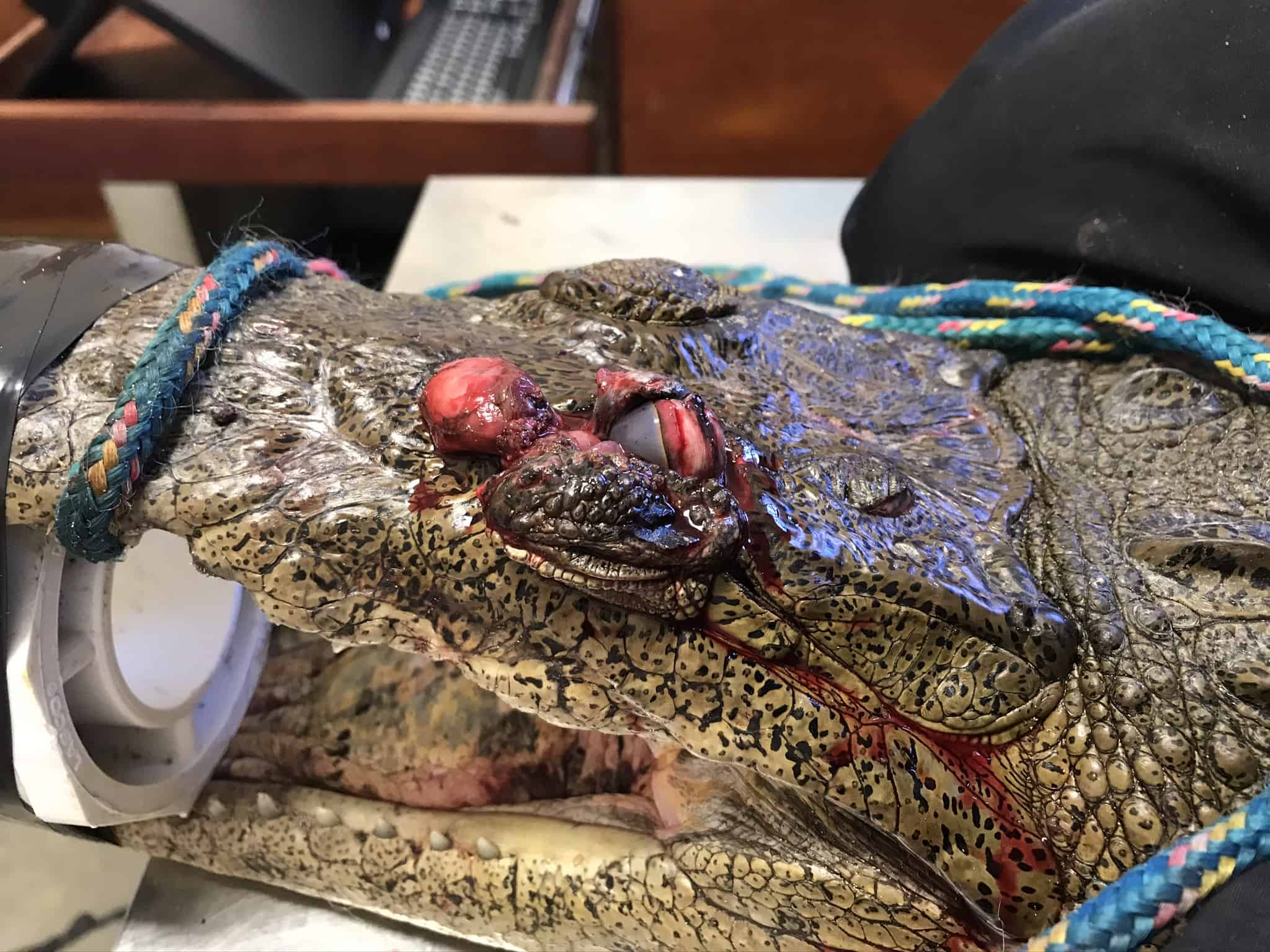
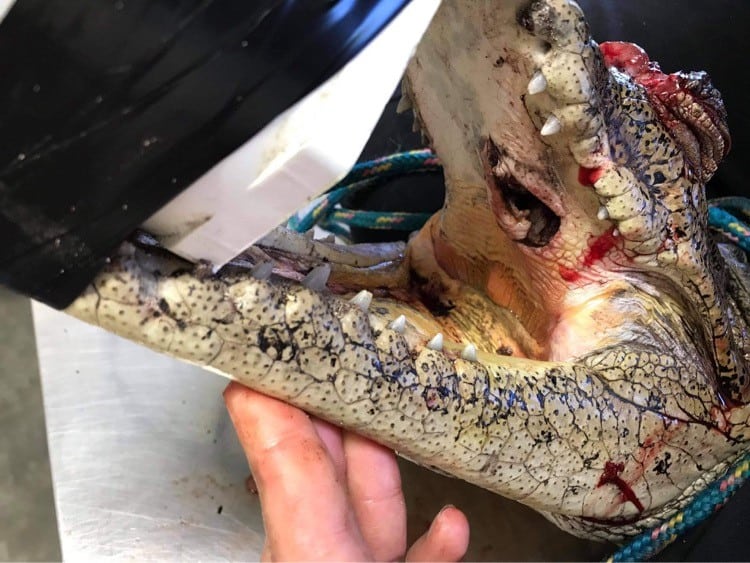
Charlotte Tweed: What’s a crocodile human conflict situation where you’ve had to achieve resolution for both parties?
Chris Summers: Getting people to put up fencing. Most of the issues we have with crocs are either going into people’s yards or under their homes. Relocating the croc is not a long-term solution because they’re just going to come back. They are territorial. There’s no way we could take one in the country, and he’s not going to swim back if he doesn’t want to. Getting people to put up fencing, either along the house or along the property line, it’s a win-win for everybody. Then the croc doesn’t have to be captured and stressed or relocated pointlessly, and then people get to live safely and their dogs and things can roam free in the yard without worrying about being ambushed. That’s always our goal. When we respond to these calls, that’s not always achievable. A lot of times, neighborhoods are built within wetlands and flood areas. In the rainy season, crocs will be found, not in the lagoon, but in the middle of a neighborhood under somebody’s house. It can’t be like a coexist. You’ve got to get it; you’ve got to move it. But yes, along the main waterways and the main lagoon, we always try and get people to erect fencing.
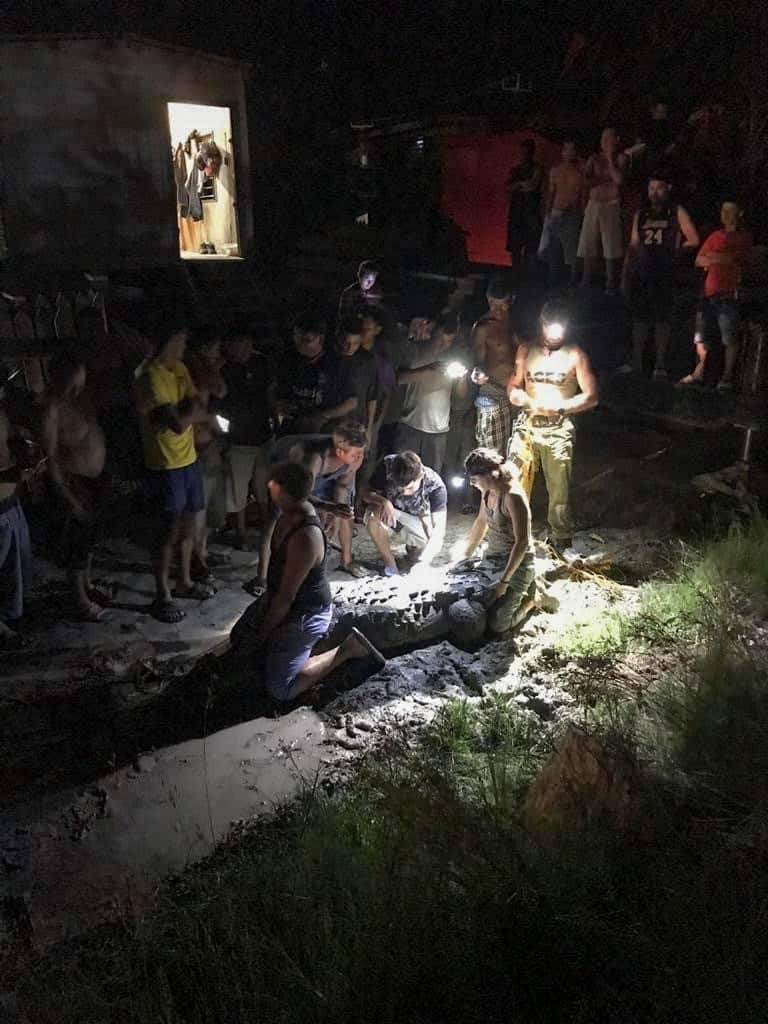
Charlotte Tweed: Which is a part of your education and outreach.
Chris Summers: Exactly. A part of our education and outreach.
When you say fencing, people think, “I’ve got to get a six-foot-tall chain-link fence. We’ve got to get four by fours and concrete it in.” It doesn’t take that. Get some pallets and erect some pallets. All you’re doing is taking away the easy accessibility or taking away the ambush capability. We have pets running around. In previous years, we would take the trailer and drive around town and go to the hardware stores and load up on pallets and deliver them so people could erect fencing.
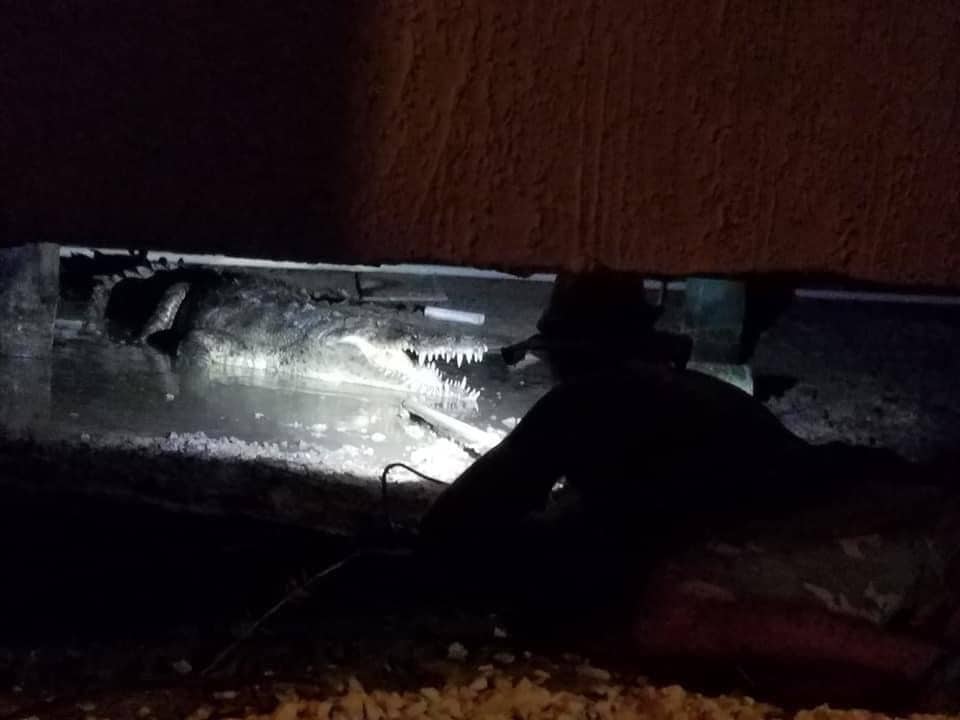
Education and Outreach in the Community
Charlotte Tweed: You have other outreach programs too, where you go and educate in the schools?
Chris Summers: We did before COVID. Yes, right at school. The kids are still not in school, but they’re online now. It’s been very back and forth. They were supposed to be back already, and they haven’t been. It depends on the day and the way the winds blow. I mean, it’s a fluid situation, isn’t it? As far as everything is happening. But yes, we will continue to go back to the schools. Before, when we used to go to schools, the focus was on the crocodiles. Now, the focus will be on wildlife in general and the conservation of the mangroves and lagoons.
Charlotte Tweed: Besides the fencing with the community, are there any other community outreach programs you do?
Chris Summers: Not at the moment. We just don’t have time. We just don’t have the manpower all the time.
Charlotte Tweed: You’ve mentioned raccoons. There’s a family of raccoons living under the house next door.
Chris Summers: Yeah. There are raccoons everywhere. That’s one animal we don’t deal with. Well, as far as rehab, because we’re just not set up for it. We do send raccoons to the mainland. We’re not set up for those right now. We don’t have the space.
Charlotte Tweed: If people want to get involved and help you, the animals, the community, the environment, how can they get involved with your organization?
Chris Summers: It depends on what they want to do. They can contact us and we can see what their general interest is. We can use help with everything. We could use help with rehabbing animals. We can use help with preparing food for animals in rehab. We can use help with cleaning. It’s all a thousand little tasks, none of them glamorous, but they all take up time and are necessary.
Charlotte Tweed: If you’re interested, get ahold of you. You have an internship program; how does that work?
Chris Summers: We did, and again, the internship kind of carried on from when the previous owners ran the crocodile sanctuary. People would come down here and we would focus on handling, training, and then data collection. Then if they had a specific focus or study they wanted to concentrate on, we would assist with that.
This past summer, one of our interns came back. He had a study he wanted to focus on for his schooling. He came back here so we could assist him with that. The internship we’re looking at right now, we still haven’t quite figured out. We don’t know what we’re going to charge people as they would just come and volunteer and whatever aspect they want to choose. If somebody is interested in rehab, they would come and help Christina in the clinic with administering meds and whatever happens with the animals. If they want to do something crocodile-focused, that would be with me in the summertime. The summer rainy season is when we are the busiest.
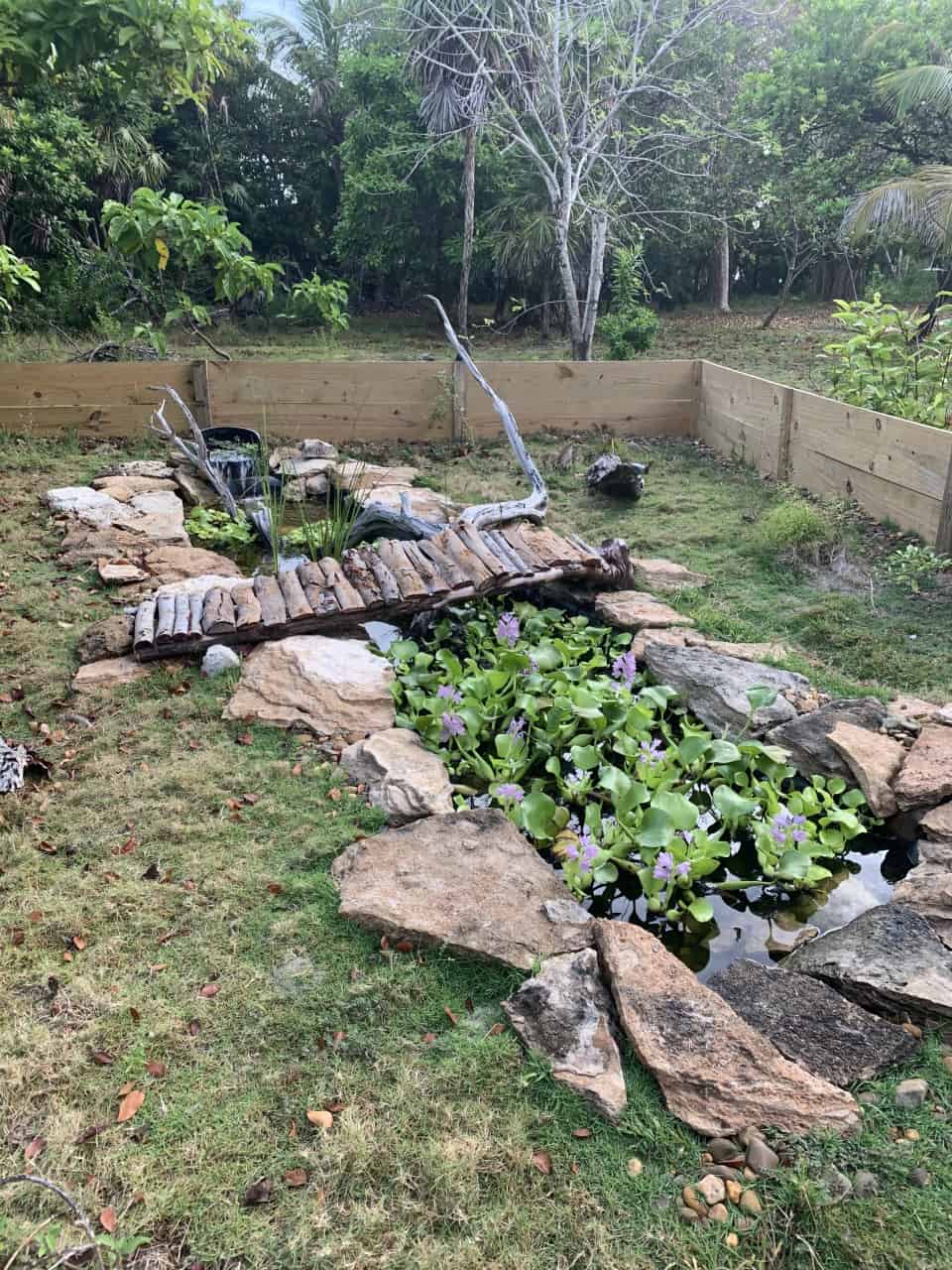
Betsy Rosenlund: I’ve seen your new enclosure at the sanctuary. Is that an iguana rescue?
Chris Summers: It was supposed to be. We ended up releasing the iguana and hoping for the best. We just finished an enclosure for an iguana that had to have its eye removed. We don’t know what happened. He was found in a car park of a condo building. He wasn’t run over. He didn’t have anything broken. I’m pretty sure he fell off the roof. And I’m pretty sure he must’ve been fighting with something because iguanas can drop from really high. They land, and they are okay. He was all smashed up. His eye was all smashed up. His mouth was swollen. He couldn’t move his limbs at first. He was running around in circles.
He had to have his eye removed because it was pretty much gone. Usually, in that scenario, this iguana would be an unreleasable animal. You’re talking about a prey animal who doesn’t have all its senses anymore. We built him this nice enclosure, but man, he was just not having it. He was not doing well. He was so stressed all the time. At first, we had him in a smaller enclosure, and he was so stressed. We built this big, massive enclosure and still the same thing. He was so stressed. The only choice was to let him go and hope for the best. Now it’s going to be the budgie enclosure because we ended up with six baby budgies a couple of months ago. Somebody dumped them on the side of the road in a cardboard box. They’re not native here and can’t be released. They are native to Australia but not there.
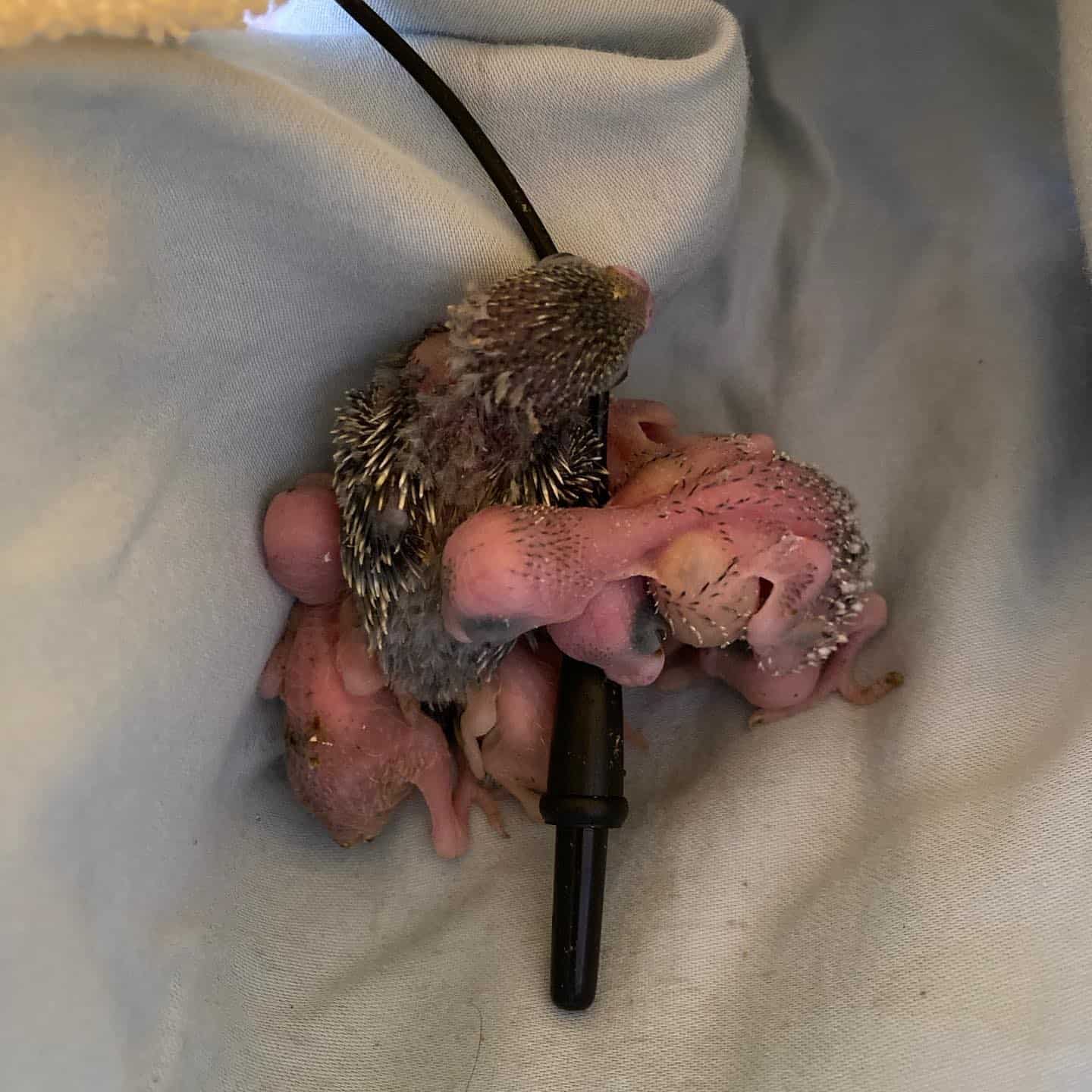
The birds will get the iguana enclosure for the time being, and then we can transfer them when needed. They were tiny when we got them. Mama budgies, they’ll lay for two weeks straight. They’ll lay like an egg, and then they have a little break, and then they lay an egg. We got these six budgies of various sizes from nearly feathered to just the newborn. They need feeding every two hours from six in the morning, up until midnight. You’re going out there with your little special spoon; you got to get it in their mouth and get them to eat. That was a fun few weeks.
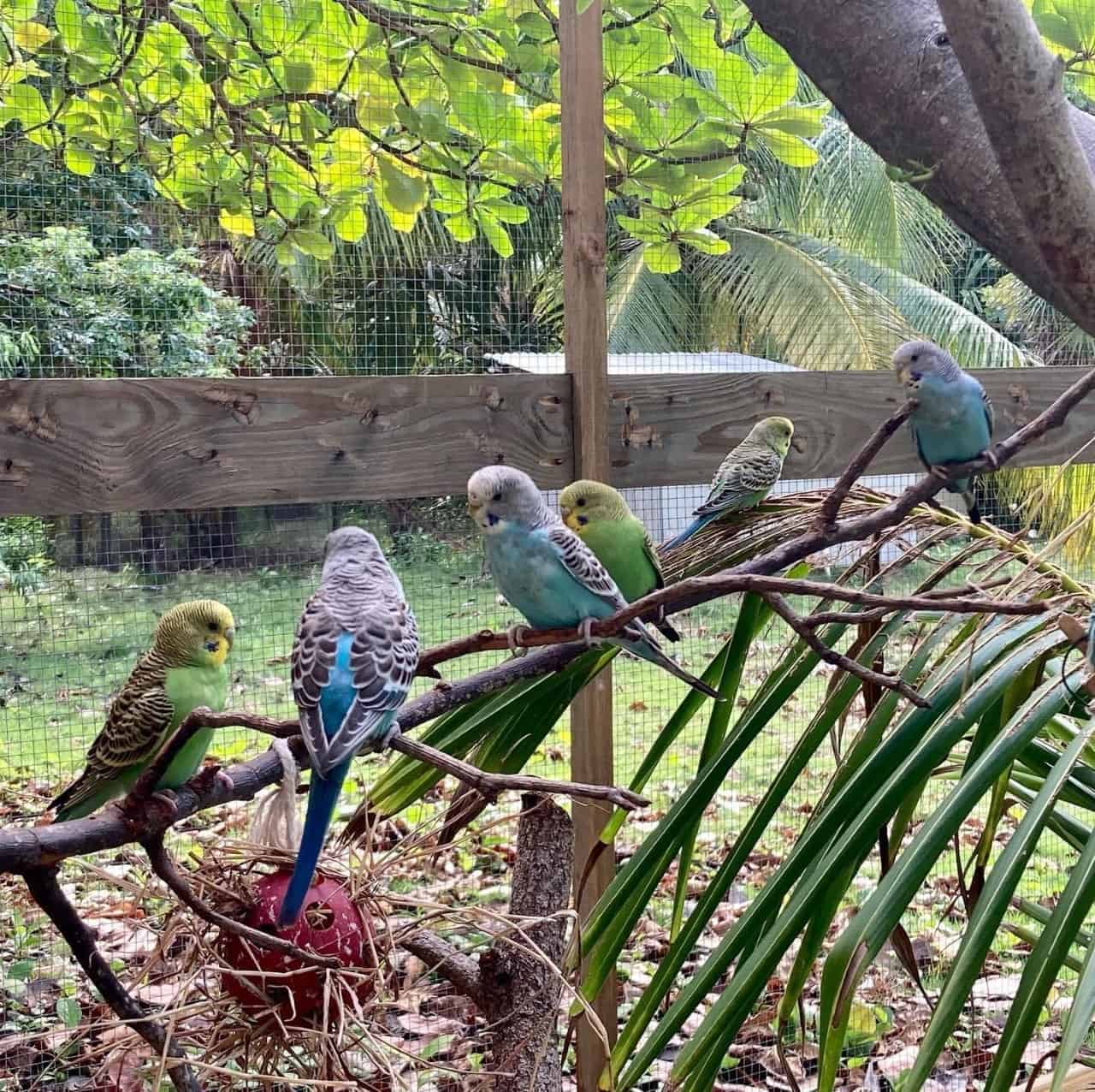
Teaming up with ACES to Make a Difference
Betsy Rosenlund: How can we move forward together? As far as education?
Chris Summers: We do have some ideas on education. We want to continue with the signs around the island because signs grab people’s attention. We want to get some signs sent over to Caye Caulker because they have the same issues. And then some are sent over to the mainland because we have friends over there who do a mangrove tour. They go out on a little solar boat and go through the mangroves on their property. We want to get some signs up in there. As far as other outreach ideas—this is the kind of stuff we can have volunteers do—is we want to have people stationed in different neighborhoods, doing surveys about the mangroves, about the wildlife, to get people’s views on the mangroves and the lagoons. Then when we can see how people are thinking about them on a broader scale. We can figure out what direction we need to send the education and how we can remedy the issues we’re having.
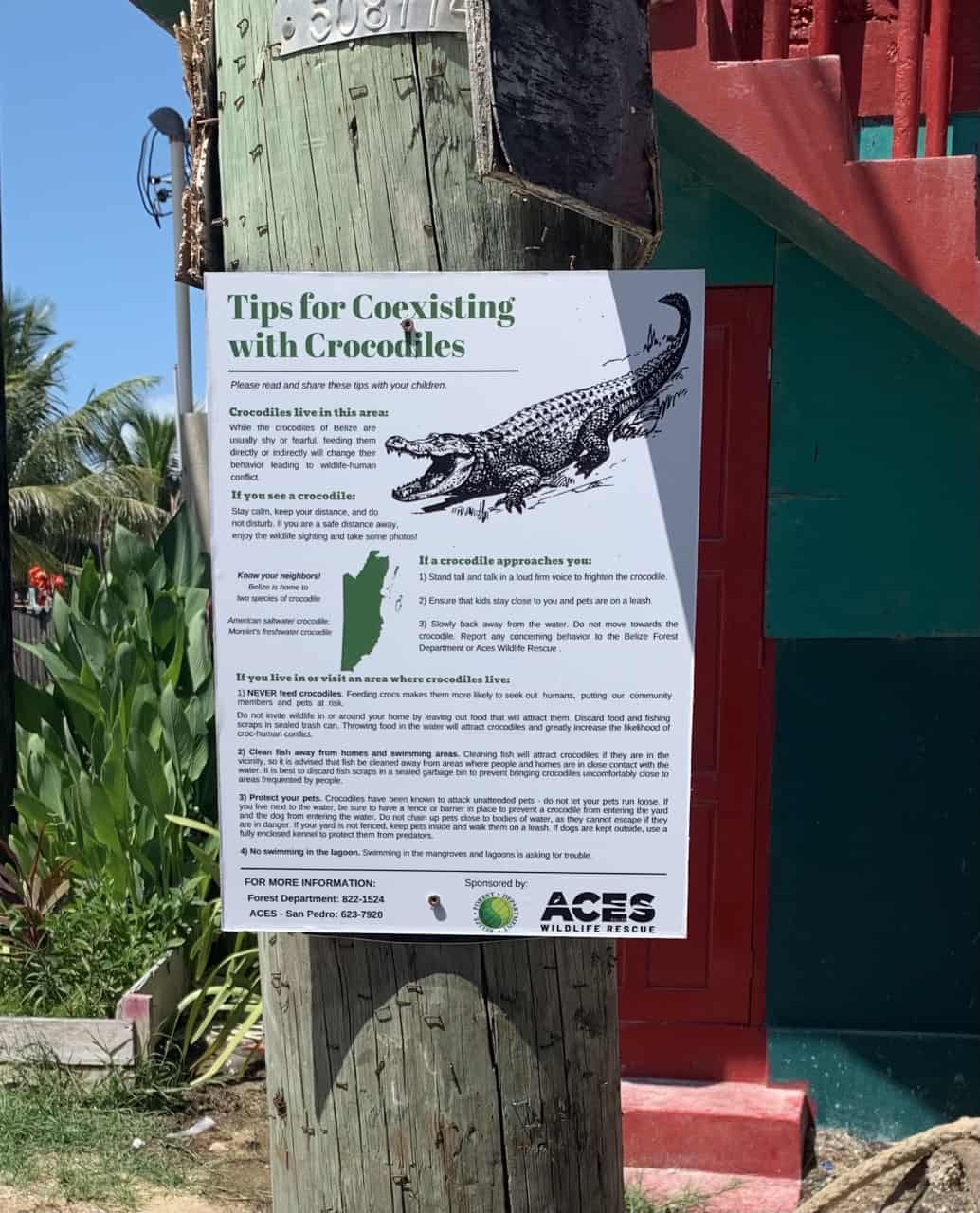
And then school supplies and activities… What we’ve done in the past at schools is we go and talk and educate. It’s all fun and games. But you know, when you go every single year, like before COVID, it’s pretty much doing the same talk because there’s only so much to cover. We started introducing activities into the mix with the summer camps before COVID shut us down. Especially with the crocodiles. I came up with this game that turned out to be way too complicated. I was trying to teach kids about the relationship between predators and prey. The kids didn’t get it. They just ran around like maniacs. They had a fun time, but the lesson was missed. I would like to do more stuff with interaction and fun.
Betsy Rosenlund: School supplies are easy for us to get.
Chris Summers: I don’t mean like pens and pencils. I’m talking about proper educational material. The materials we had before were of poor quality. We made them at home. We painted plywood and printed pictures out on our printer and stapled it on the boards. To get some nice, proper displays printed up would be great.
Betsy Rosenlund: We could work together and get stuff printed up. You can take the materials to the school for distribution.
Chris Summers: I liked the idea of coming up with games the kids can do. It gets them active, and it gets them thinking about conservation. We went to the summer camp. It was a large group, and we split them off into two. One group did this, and the other group did the other game.
We got a bunch of sticks and painted them green to make mangroves. The mangroves were the safe zone. And then we got some rags that we chopped up and used them to make a bunch of kids little fish, like minnows and Molly’s that were the prey fish. Then we had some kids made into bigger fish. Then we had this one big kid as the big crocodile that had to chase people down.
Charlotte Tweed: I can see how the game would have gone sideways.
Chris Summers: But it was a good idea! You know when you play card games the first time, and you’re just not getting it? It was like that. The idea was to have him play the crocodile. Eventually, we took the big, adult crocodile out of there. We took away the apex predator. What happened was all the other little predators weren’t getting eaten by the big crocodile. There were too many of them, and they ate all the little fish. Now there was no real fish left, and they just ran around going, “Well, what are we doing?” “Well, you’ve got nothing left to eat. What happens? You starve to death.” Okay, that was the goal. It was a good plan, fully executed.
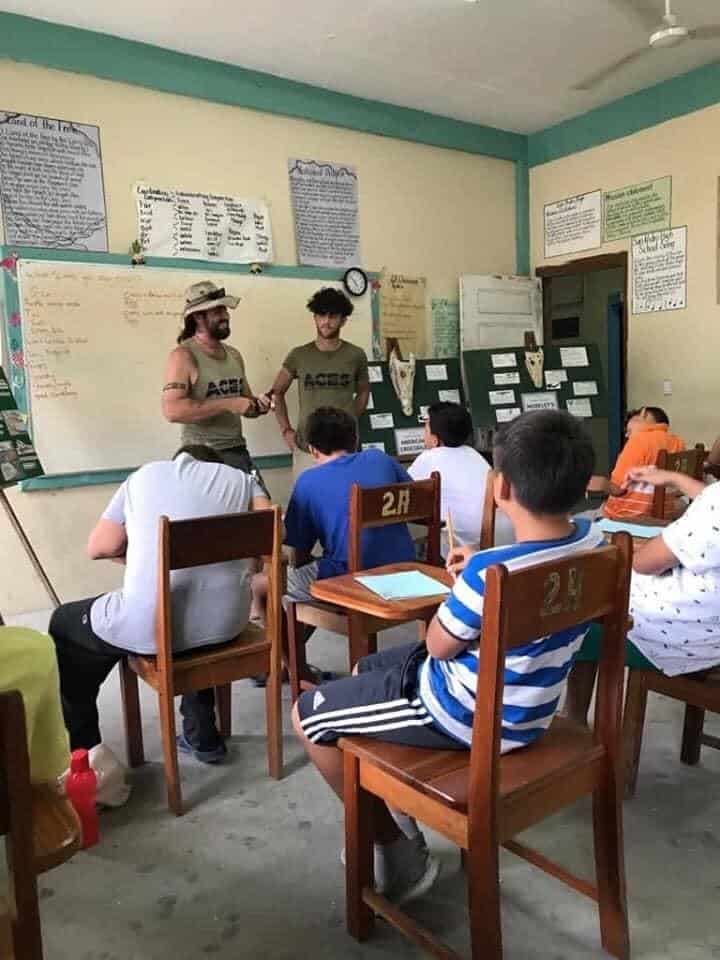
On the Lighter Side
Part of Chris’ work involves calls from the community in emergency cases. Here is how one call went sideways:
Betsy Rosenlund: More people. More human power so Chris can respond to all my crucial crocodile calls.
Chris Summers: Yeah. Did she tell you about her crucial call?
Betsy Rosenlund: A couple of years ago, it was a rainy Sunday night. I was dropping some kids off at their homes, back in a neighborhood. This little crocodile ran across the street. I have to call Chris because there are kids everywhere. I don’t want the kids messing with the crocodile or the crocodile messing with the kids. That’s a crisis. I called Chris.
Chris was playing X-Box but said he would come. Chris comes looking around for this crocodile. It’s raining and raining. No crocodile in sight. There are these kids behind the fence, laughing. “Have you seen a crocodile?” I asked. They laughed even more and pulled up a plastic crocodile on a fishing line, and they go, “You mean this crocodile, Miss?”
Charlotte Tweed: Hilarious!
Betsy Rosenlund: Yep. They played me real good.
Chris Summers: Yep, that was the one. They just pulled him up on a fishing line.
Charlotte Tweed: There you have your most critical mission.
Chris Summers: That was the most critical. There were kids involved. Baby animals.
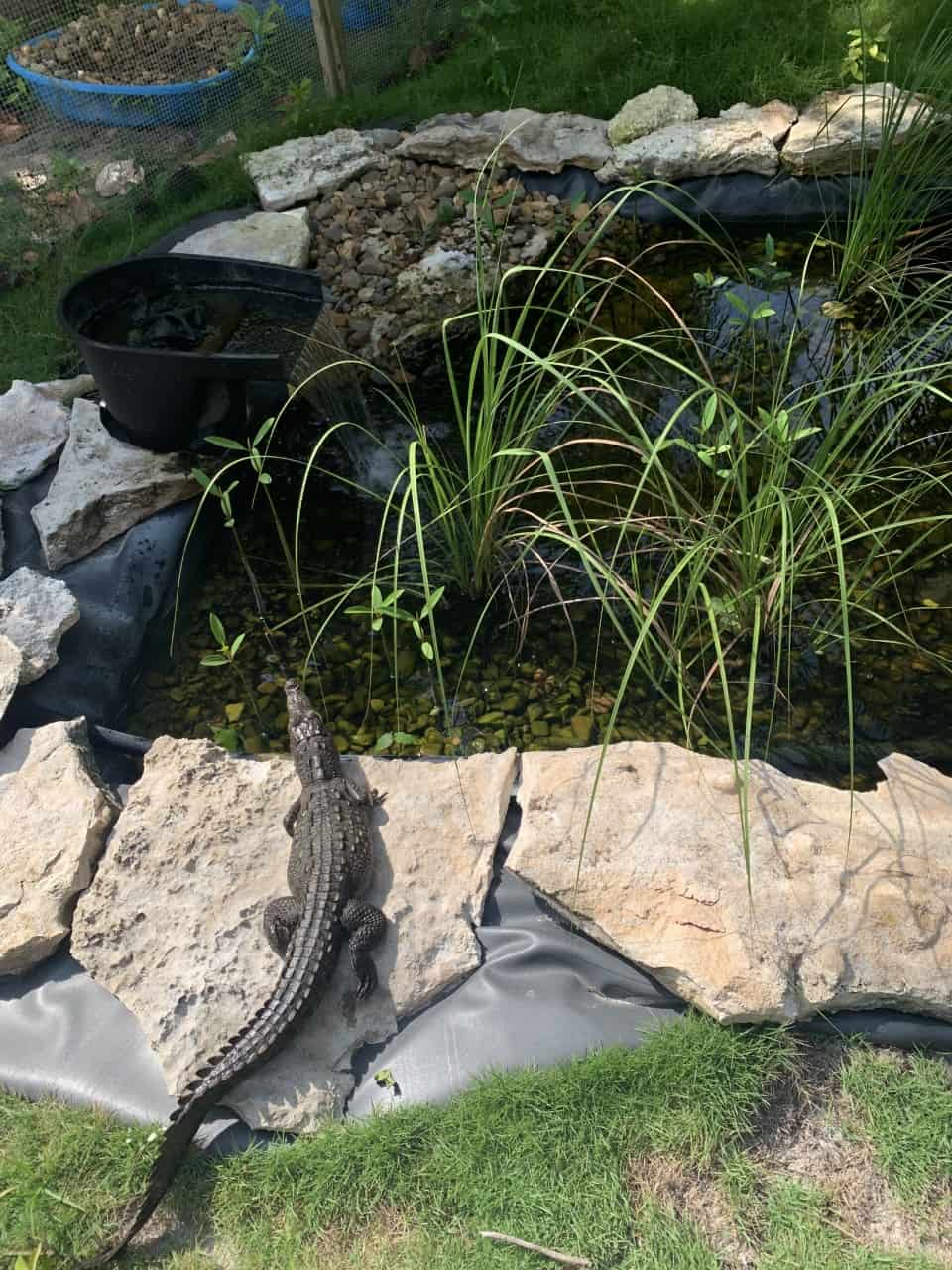
Do you want to save distressed crocodiles? To put your footsteps alongside those who work tirelessly to save mangroves before any more of them disappear? To help unreleasable animals continue life in safety and comfort? To see the site where ACES makes a difference in the lives of animals and the community on Ambergris Caye? Check out the ACES website, get ahold of Chris, and see what you can do to help.
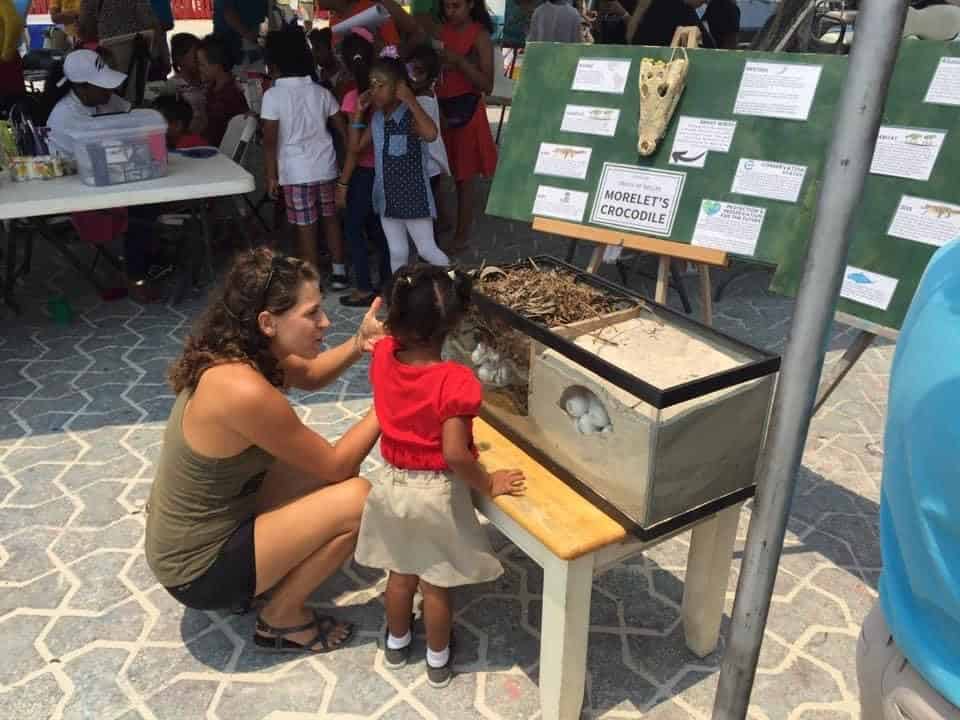
All photos submitted by Chris Summers of ACES Wildlife Rescue
